Cherry Angioma
Last reviewed by Dr.Mary on August 9th, 2018.
Cherry Angiomas are the most common vascular lesions which appear on the human skin. No one exactly knows what causes them. These lesions are made up of clusters of dilated capillaries which explain the reason for the purple or cherry-red color.
These lesions may occur almost anywhere on the human skin, but they most normally occur on the torso region. They rarely develop on the feet or hands. When they first appear, these lesions are approximately the size of a pinhead as well as not protruding above the surface of the skin. Nevertheless, some of these lesions can grow to a ¼ inch or more across and can become spongy as well as mushroom or dome-shaped.
Cherry angiomas are generally harmless and painless, but many individuals want to have them removed for cosmetic reasons. Largely sized angiomas may profusely bleed when or if they are injured. It is for this reason that an individual should not puncture them or attempt to remove themselves.
A cherry angioma can develop anytime in your life, but frequently they develop after the age of 40. Scientists have found that more than 70% of individuals 70 years of age or older have these lesions. These cherry-red bumps develop alone or in groups, mostly on the torso as well as frequently on the scalp, face, arms, legs and neck.
There are different types of angiomas which include:
- Cherry angiomas
- Spider angiomas
- Angiokeratomas
What causes cherry angiomas?
There is little known about the factors which add to the development of a cherry angioma. In extremely rare occasions, they can be caused because of the existence of a developing internal malignancy.
Several reports have described the look of many small red lesions as histologically resembling the lesions in individuals with malignancies, but most of these lesions occur in healthy individuals. There is also the belief that genetic malfunctioning causes these lesions.
Many times mustard gas, bromides, 2-butoxyethanol as well as cyclosporine containing chemical compounds are believed to cause cherry angiomas.
Stress may also be a contributing factor in the cause of cherry angiomas. It has been proven that any type of continuing stress can cause an individual to age faster, and older age is one of the main factors which eventually lead to the development of cherry angiomas.
Symptoms
The symptoms of this problem with the skin are:
- Red dots
- Normally the size of a pinhead
- Dots can be as large as 1/3 of an inch
These dots normally form on:
- Arms
- The body
- Legs
Additional symptoms of these skin lesions are growth:
- Bright cherry-red
- Smooth
Cherry Angioma Treatment
Medical involvement is really not helpful and not indicated in the treatment of these lesions. Perform biopsy on lesions in which there is a doubtful diagnosis. The biopsy process can be used as a therapeutic measure to remove traumatised or bleeding lesions.
Treatment for cherry angiomas lesions is recommended only in cases of haemorrhage or irritation or in instances where the lesions are believed by the patient to be undesirable cosmetically. The options for surgical removal include the following:
Shave Excision
This is a procedure which allows delicate removal of the lesion with a blade as well as histologic confirmation of diagnosis. Hemostasis after exclusion can be obtained by chemicals such as with aluminium chloride or by performing electrocautery.
Curettage and Electrodesiccation
This method permits dependable removal of the lesion through tissue destruction. The risk of scarring with this method is typically minimal when a skilled operator does the curettage.
Pulsed dye laser
This is ablation of lesions by using a pulsed dye laser. The use of this laser with a green light source allows the selective absorption of the laser energy by the haemoglobin contained within the red blood cells as well as subsequent obliteration of the vascular lumen.
Cryotherapy
This is a method which is less well-controlled means by which the lesions are eliminated through irritation, coagulation as well as subsequent destruction.
These lesions can develop the following complications:
- Bleeding when they are injured
- Changes in appearance
- Psychological distress

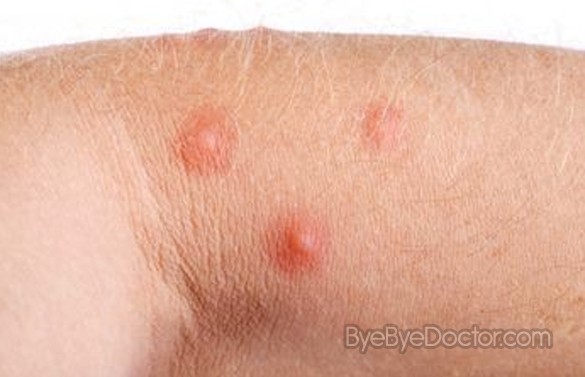
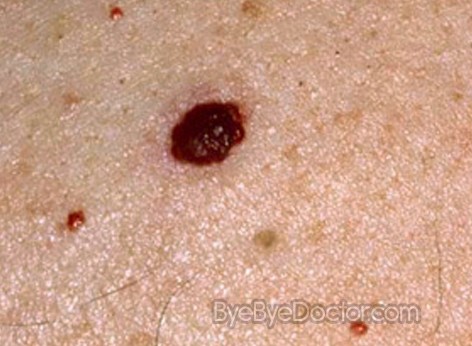

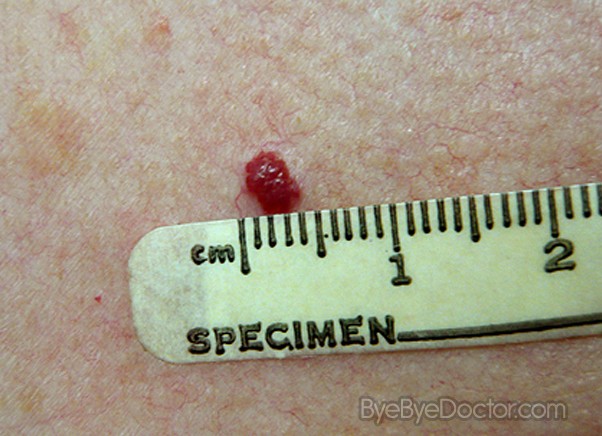

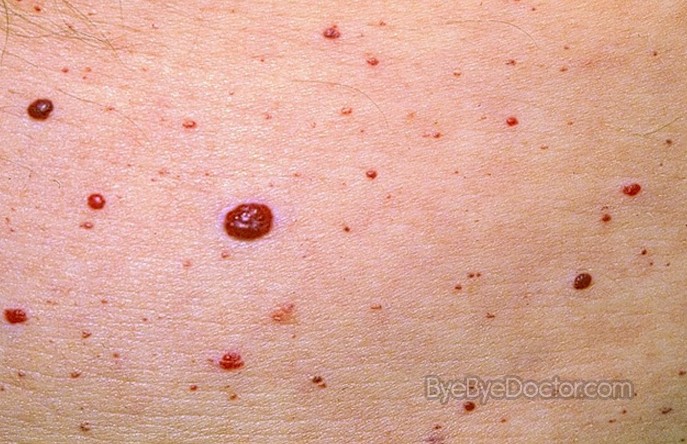
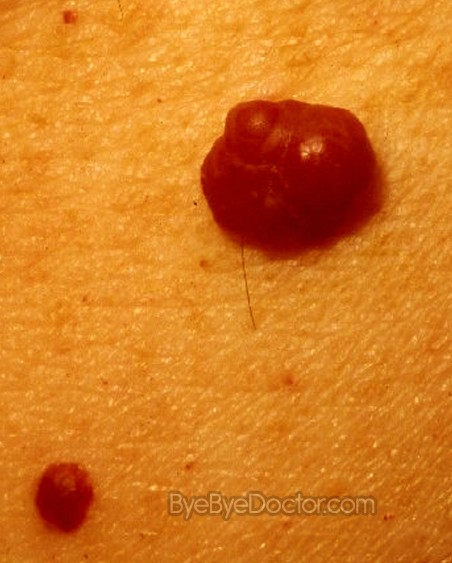
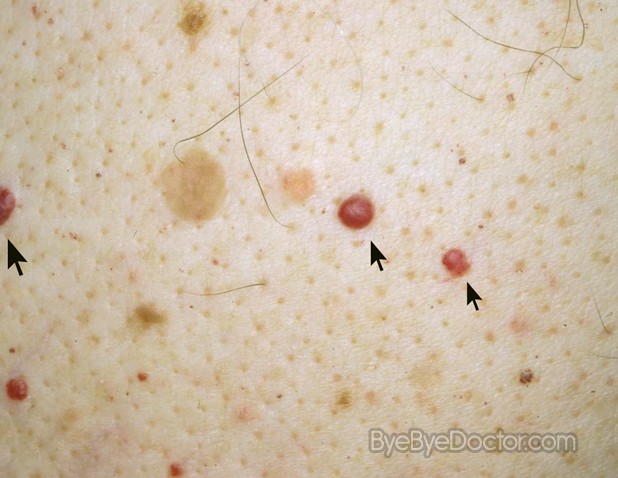
I have these “Cherry Angioma’s” on the back of my wrists. [I am 51 yrs old]. I work as a clinical technician at an EyeCare place. I was called in to Human Resources and told that I was putting our patients in danger and i had to cover my wrists. They were very cruel in their tone. I was already embarrassed by these red spots, but this made it worse. In what way am I putting my patients at risk ?
@AnnaMarsh These angioma are not dangerous and are not contagious. They are hereditary and similar to freckles, sun spots, or moles in their benign nature. Get a note from your doctor and bring it in to work.